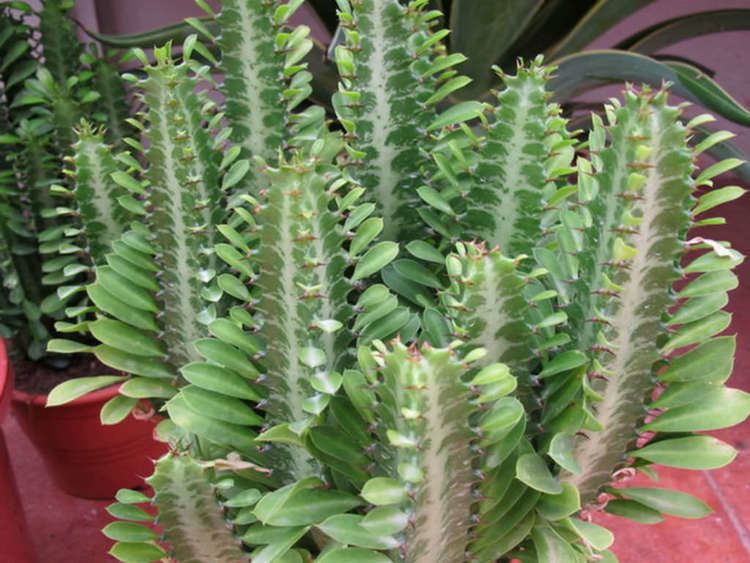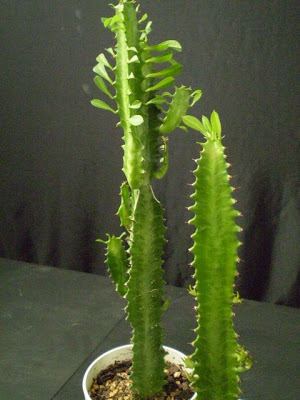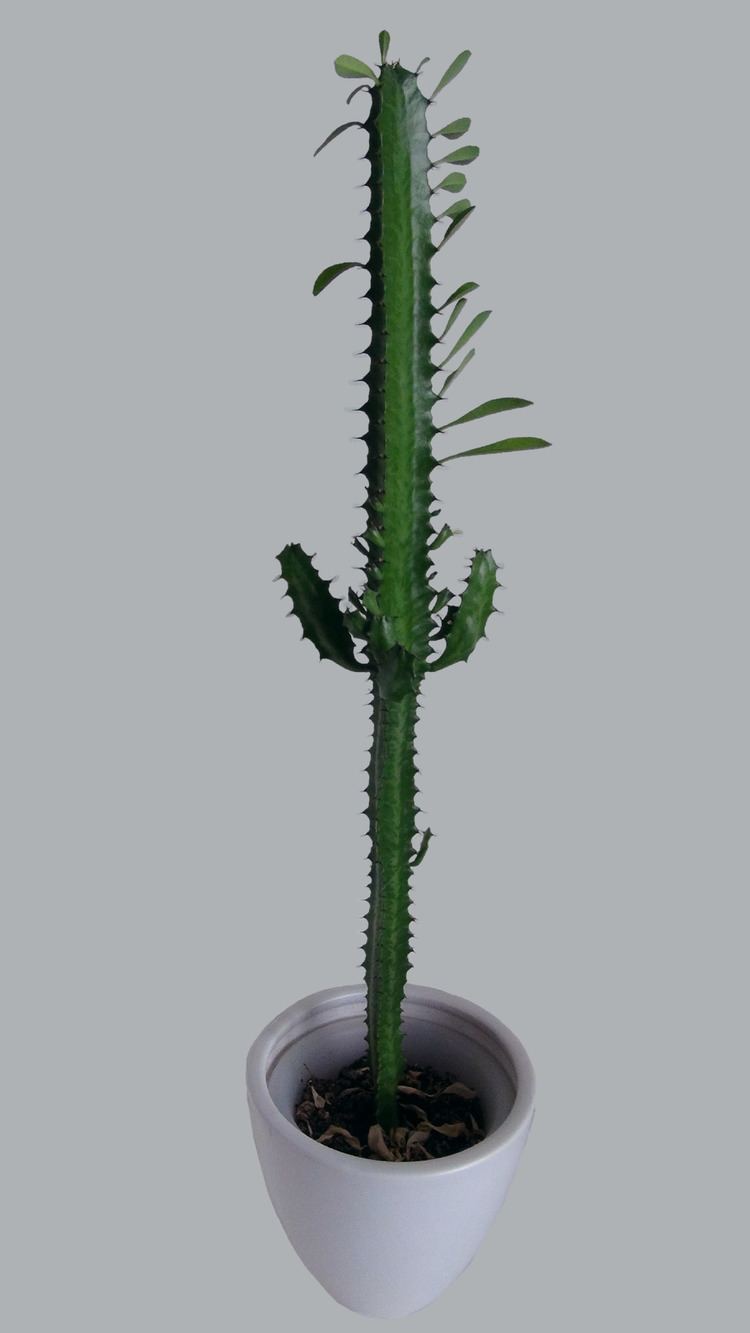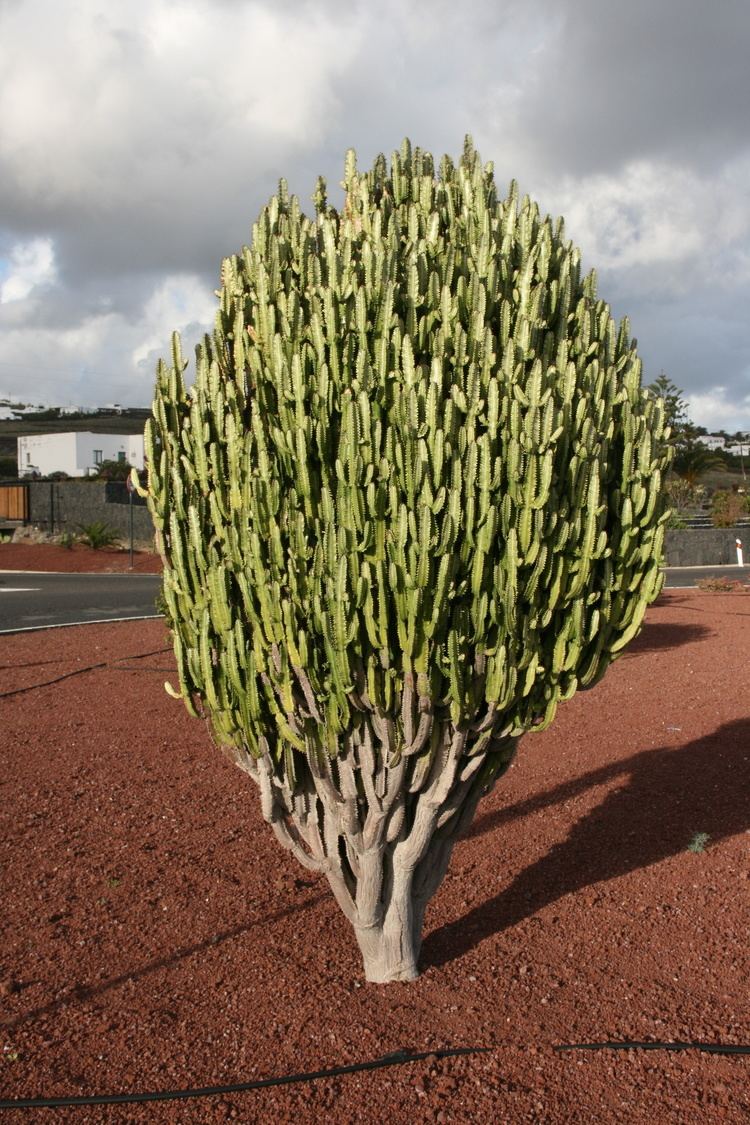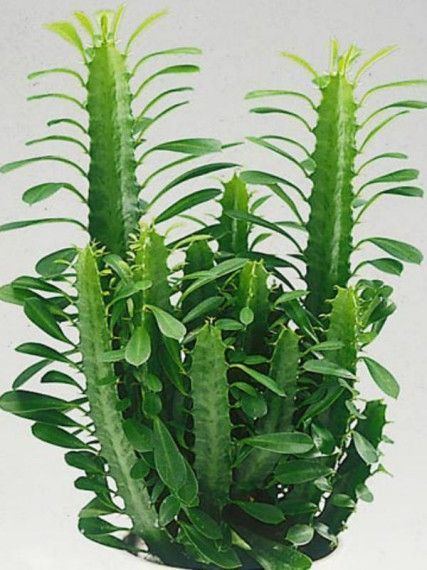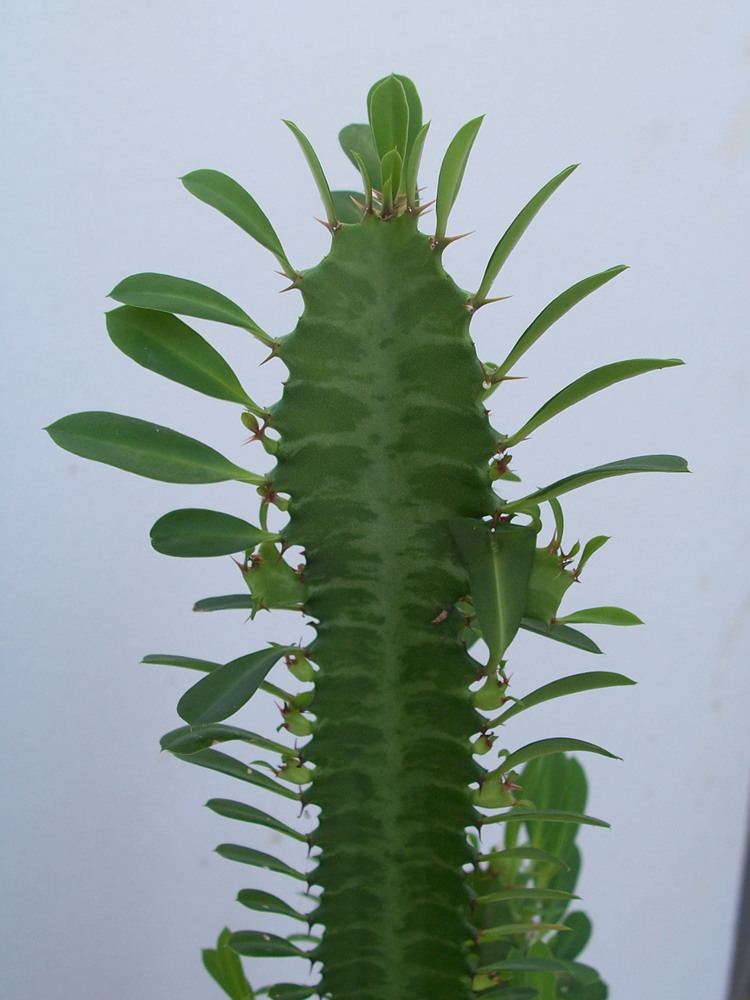Rank Species | ||
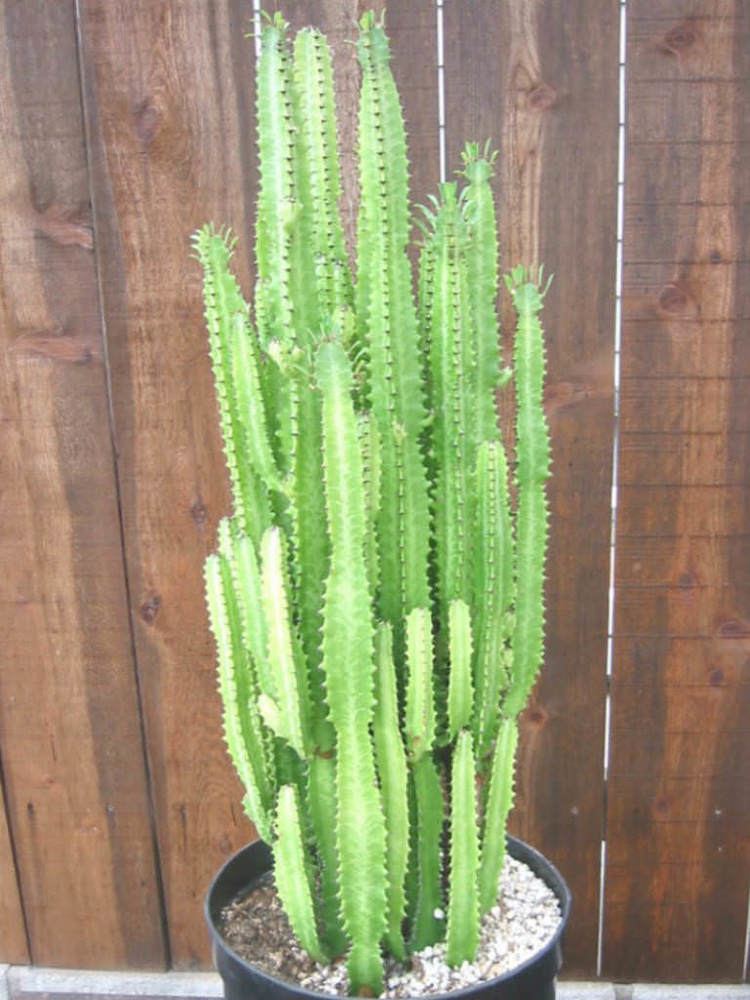 | ||
Similar Euphorbia lactea, Spurges, Euphorbia tirucalli, Euphorbia leuconeura, Euphorbia obesa | ||
Euphorbia trigona (also known as African milk tree, cathedral cactus, Abyssinian euphorbia, and high chaparall) is a perennial plant that originally comes from Central Africa. It has an upright stem that is branched into three or four sides. The stem itself is dark green with V-shaped light green patterns. The about 5mm long thorns are placed in pairs of two on the stem's ridges. The drop shaped leaves grow from between the two thorns on each ridge. The plant has never been known to flower, and is possibly a hybrid. As with many other Euphorbia species, the latex from the plant is poisonous and can cause skin irritations. The trigona can withstand brief cold temperatures of up to -3 degrees. It prefers sandy soil but can withstand most types of soil, provided it is well draining. It can root very easily from stem cuttings, if allowed to dry for 3-7 days before planting so that it can form a callus and not rot. It grows from 1.5 - 3 meters. It is a pest-free plant. A problem that some trigonas face is that they are susceptible to falling over when fully grown because of their shallow and small root system
Contents
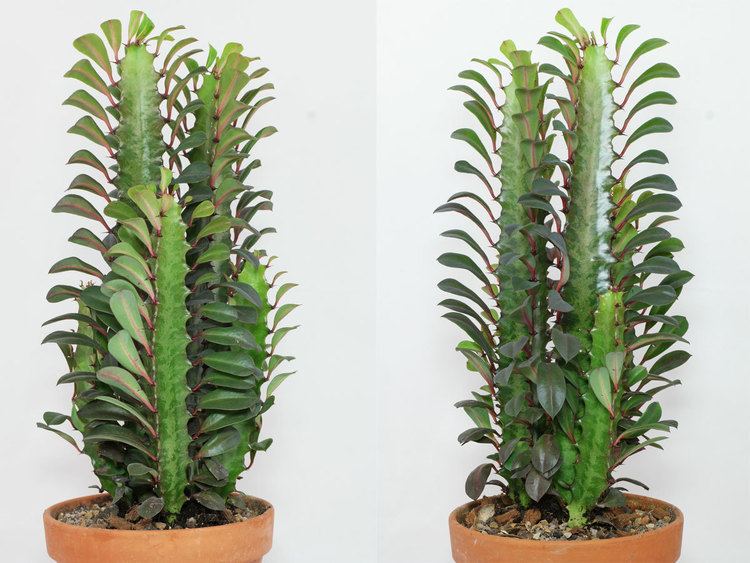
Euphorbia trigona african milk tree
Uses
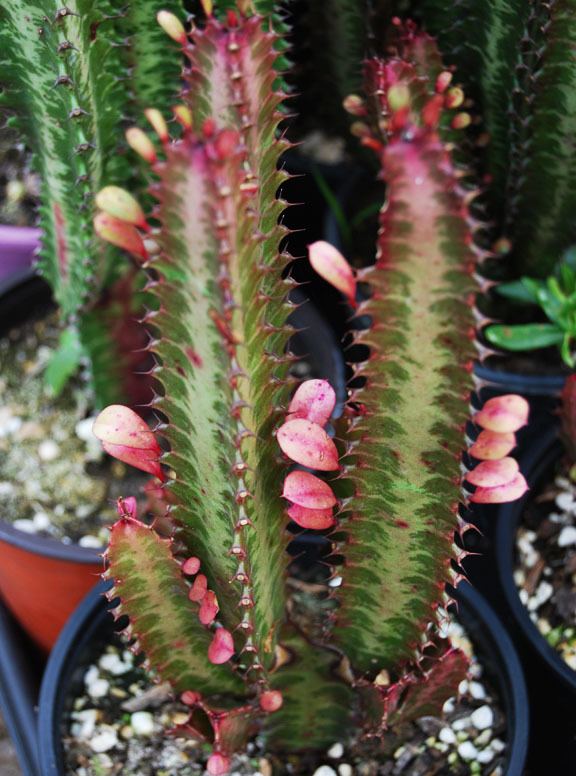
The plant is only known in human cultivation and is commonly used as a house plant. It is used as a ritual plant and a hedge in Gabon.
